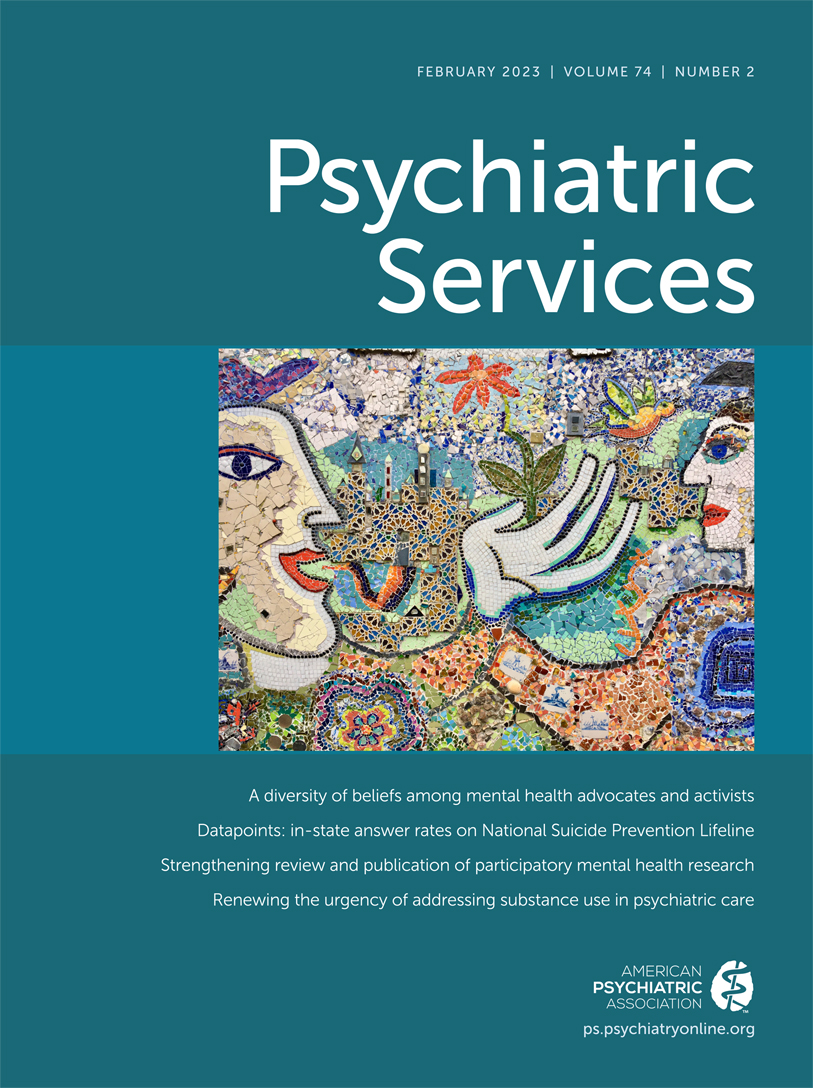Universal Suicide Risk Screening to Facilitate Mental Health Treatment: VA Risk ID
TO THE EDITOR: A recent Controversies in Psychiatric Services column presented two viewpoints on the potential benefits and drawbacks of universal screening for suicide risk (1–3). Authors were asked to respond to the following: “Universal suicide screening in all settings that see behavioral health patients, including nonbehavioral health general hospital settings, is the best approach to address suicide risk in the population” (1–3). Unfortunately, within these commentaries recent evidence on the implementation of the Veterans Affairs Suicide Risk Identification Strategy (VA Risk ID) was not discussed. In October 2018, the Veterans Health Administration (VHA) began implementation of VA Risk ID, a VHA-wide effort to facilitate standardized suicide risk screening and evaluation within the largest health care system in the United States. Toward this end, suicide risk screening and evaluation using standardized and evidence-informed tools have been implemented across primary care, emergency department (ED), and specialty care settings. Efforts have also focused on identifying robust workflows and on providing teams with technical assistance (e.g., community-of-practice meetings), centralized resources, and performance feedback. Millions of veterans have now been screened, with the prevalence of positive screening results being relatively low (approximately 3.5%) (4), further highlighting the feasibility of this practice (1). For veterans who screen positive, the follow-up comprehensive evaluation process is frequently implemented in the setting where the patient was screened, thereby limiting unwarranted transfers to ED settings and minimizing potential stigma or harms. Moreover, based on an individual’s risk factors and warning signs, identification of and referral to both upstream (e.g., services to mitigate housing insecurity) and downstream (e.g., cognitive-behavioral therapy for suicide prevention) interventions to reduce suicide risk are part of the evaluation process. With respect to follow-up care, evidence from 97,224 veterans who were screened in ambulatory care settings (fiscal year 2019) showed that the probability of mental health follow-up and engagement after a suicide risk screen was significantly higher among those who had a positive screen compared with those who had a negative screen (5). Importantly, veterans without recent (i.e., past-year) connection to mental health treatment who screened positive for suicide risk had the greatest probability of mental health follow-up and treatment engagement (5).
Although experiences and findings to date support the implementation of a standardized, comprehensive suicide risk screening and evaluation program in the VHA, there is certainly more work to be done to determine whether universal screening is “the best approach to address suicide risk in the population” (3). The utility of universal screening in any health care system will likely depend on the overall context in which it is being considered. Given that there is no single solution to suicide prevention, universal screening is likely to have the greatest impact when implemented as part of a larger, comprehensive suicide prevention strategy with the goal of identifying those at risk (occult or otherwise) in a health care environment, such as the VHA in which individuals have access to upstream or downstream interventions. Current implementation of VA Risk ID addresses potential costs noted by Bryan et al. (2) (e.g., low likelihood of receiving an evidence-based treatment for reducing or preventing suicidal behaviors) and best practices highlighted by Goldstein Grumet and Boudreaux (1) (e.g., evidence-informed practices for assessing and managing suicide risk).
1. : Universal suicide screening is feasible and necessary to reduce suicide. Psychiatr Serv 2022 (Epub July 11, 2022) Medline, Google Scholar
2. : Weighing the costs and benefits of universal suicide risk screening in primary care: an evidence-based approach. Psychiatr Serv 2022 (Epub July 11, 2022) Medline, Google Scholar
3. : Benefits and drawbacks of universal suicide screening. Psychiatr Serv 2022 (Epub July 11, 2022) Google Scholar
4. : Assessment of rates of suicide risk screening and prevalence of positive screening results among US veterans after implementation of the Veterans Affairs Suicide Risk Identification Strategy. JAMA Netw Open 2020; 3:e2022531Crossref, Medline, Google Scholar
5. : Mental health follow-up and treatment engagement following suicide risk screening in the Veterans Health Administration. PLoS One 2022; 17:e0265474Crossref, Medline, Google Scholar



